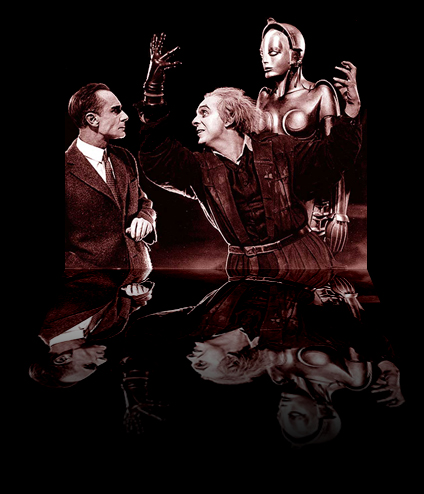 |
Mad Science: Creation and Individuality The act of creating a new process or thing capable of changing the world is a powerful experience for those with the knowledge and technique necessary to achieve it. Those few who are able to do so gain a new sense of identity distinct from the mass of people from which they have risen and whose lives they have changed. The idiosyncratic knowledge and activity required distinguishes these individuals from the rest of society and the gulf of understanding leads to differing perceptions of the nature of their work. This “otherness” leads to their segregation from normal interaction and to a view of them as mad. In the popular imagination represented on film these characters working and living at the edge of social acceptance, powerful in their ability to change the world, are the characters most rooted in history, the ones who inhabit the oldest buildings: Rotwang in his medieval timber frame house in Metropolis and Sebastian in the Bradbury Building in Blade Runner. The unease of their existence is generated by its duality – they live at once in the city and out of it: inside its boundaries, such as Rabbi Loew’s house in the Prague ghetto in The Golem, and outside its social life, such as is demonstrated by the Rabbi’s secret labyrinthine complex beneath his house. Living outside or on the edge of society because of what they know, inventors and scientists in film frequently become alienated from other people and loneliness can be read as the source of their determination to recreate life and human interaction artificially, as demonstrated by the fugitive Dr. Laughton’s intention to keep Tima for himself in Metropolis 2001. “Otherness” combined with the power of their knowledge render inventor characters especially susceptible to hubris and its related pitfalls. Creation as an expression of individuality in the midst of the anonymity of modern urban existence is frequently translated into overweening pride which dooms its perpetrator as part of the restitution of universal order that often occurs as the resolution of a plot. In turn, the combination of pride and the desire to create life lead to the impulse to perfect that which is created and endow it with abilities beyond those of ordinary humans. This process has the consequence of generating subhumans with superhuman capabilities and with the doom necessitated by hubris and the prideful exercise of unnatural scientific prowess creates the frequent occurrence of the death of the creator at the hands of the created. |
| Rotwang reveals his handiwork to John Fredersen [Metropolis, 1927] | Male Identity |